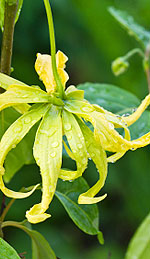 The flowers of the small ylang-ylang tree have been used in Asia for centuries to express love in marriage ceremonies.The tree grows in Malaysia, Madagascar, the Philippines, and the Reunion Islands. The name means ‘Flower of Flowers’ and those flowers can be pink, yellow, and mauve. The best oil usually comes from the yellow flowers, which are picked early in the day in early summer.
The flowers of the small ylang-ylang tree have been used in Asia for centuries to express love in marriage ceremonies.The tree grows in Malaysia, Madagascar, the Philippines, and the Reunion Islands. The name means ‘Flower of Flowers’ and those flowers can be pink, yellow, and mauve. The best oil usually comes from the yellow flowers, which are picked early in the day in early summer.
Ylang-ylang oil qualities vary depending on the distillation segment. The first segment is considered ‘extra’ and is a sought after commodity in the perfume industry. Aromatherapy considers each oil segment useful in various ways, and the healing properties of any of these oils are considered impressive by any standards.
Ylang-ylang oil is used to slow down a rapid heartbeat and rapid breathing, and is thus very useful in trauma and shock situations. Ylang-ylang is also used to condition the skin because it balances natural oil production. The oil has a very distinct sweet aroma, which also acts as a catalyst for sexual passions.
The three aromatherapy oils that are best known for aphrodisiac properties are rose, neroli, and jasmine, but ylang-ylang is also one of the best oils for uplifting the emotions and fueling sexual desire. Ylang-ylang has a calming effect and an incredible floral scent, so it is considered a great aphrodisiac by people who are looking for a natural stimulant that rarely disappoints in terms of rousing the libido.
The chemical compounds in ylang-ylang oil certainly play a role in its ability to interact with hormone secretion. The chemicals found naturally in the oil are linalool, methyl ether, caryophyllene, geranyl acetate, benzyl benzoate, methyl benzoate, benzyl acetate, p-cresyl, and other sesquiterpenes. Those chemicals give the oil aphrodisiac, hypotensive, nervine, antidepressant, sedative, antiseborrhoeic, and antiseptic properties.
The euphoric and sedative effect that ylang-ylang has on the nervous system helps relieve anxiety, tension, fear, shock, and panic. When ylang-ylang oil is massaged into the skin the nervous system relaxes, which means the respiratory and circulatory systems begin to function normally. When the oil is added to a cream or lotion it balances sebum production in the skin. That helps eliminate oily skin and balances overly dry skin as well.
When ylang-ylang oil is blended with essential oils such as lavender, grapefruit, bergamot and sandalwood in aromatherapy, the wellness results are substantially enhanced. Ylang-ylang lives up to its name; it continues to be the ‘flowers of flowers’ that helps people enjoy a healthy sex life and to relax in times of stress.

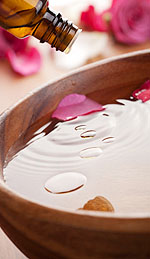 The rich perfumed fragrance of the rose is unmistakable. The aroma of the rose has enamored cultures around the world for centuries, rivaling even the renown of the prized
The rich perfumed fragrance of the rose is unmistakable. The aroma of the rose has enamored cultures around the world for centuries, rivaling even the renown of the prized 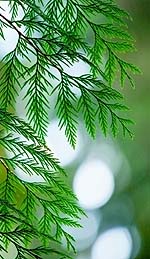 Cedarwood has been used for over 5,000 years for many good reasons. The ancient Sumerians as well as the Egyptians believed cedarwood could connect the body with the mind in rituals and ceremonies. The Egyptians also believed that the body should be embalmed in cedarwood so the journey to the other side was a smooth transition.
Cedarwood has been used for over 5,000 years for many good reasons. The ancient Sumerians as well as the Egyptians believed cedarwood could connect the body with the mind in rituals and ceremonies. The Egyptians also believed that the body should be embalmed in cedarwood so the journey to the other side was a smooth transition.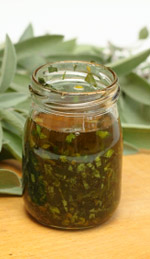 It’s hard to identify the age of nature’s medicine chest. Plants and trees have been healing aches and pains as well as wounds and scratches for centuries. Oils from the plant kingdom have balanced the central nervous system, healed the intestinal system, and stimulated the circulatory and respiratory systems long before people wrote about those accomplishments.
It’s hard to identify the age of nature’s medicine chest. Plants and trees have been healing aches and pains as well as wounds and scratches for centuries. Oils from the plant kingdom have balanced the central nervous system, healed the intestinal system, and stimulated the circulatory and respiratory systems long before people wrote about those accomplishments. 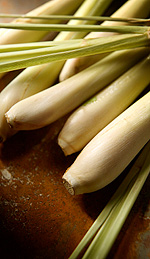 In India, Ayurvedic medicine is considered the great great-grandfather of all natural medical knowledge, because the information regarding the chemical compounds that are used to treat a plethora of illnesses and disease are founded in Ayurvedic thought.
In India, Ayurvedic medicine is considered the great great-grandfather of all natural medical knowledge, because the information regarding the chemical compounds that are used to treat a plethora of illnesses and disease are founded in Ayurvedic thought.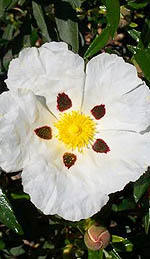 Labdanum is one of those shrubs that makes ancient history a truly intriguing tale. Mediterranean sheep and goat herders were the first group to figure out what to do with the sticky resin from the bushes. They collected the resin by combing the thighs and beards of goats that grazed on the cistus shrubs. They developed wooden rakes with a double row of wooden thongs to sweep the shrubs so the resin could be collected and then extracted.
Labdanum is one of those shrubs that makes ancient history a truly intriguing tale. Mediterranean sheep and goat herders were the first group to figure out what to do with the sticky resin from the bushes. They collected the resin by combing the thighs and beards of goats that grazed on the cistus shrubs. They developed wooden rakes with a double row of wooden thongs to sweep the shrubs so the resin could be collected and then extracted. The aborigines of Australia have been using tea tree as a medicine for over 30,000 years. They’ve long known that it can heal wounds, stop infections, treat burns, moisturize dry skin, and give the body a little extra energy on a hunt. When Captain Cooke and his crew arrived in 1770 they dubbed it the “tea tree”. Cooke and his men made tea out of the leaves, and later mixed it with spruce leaves and made a beer that kept the men happy as well as a little tipsy.
The aborigines of Australia have been using tea tree as a medicine for over 30,000 years. They’ve long known that it can heal wounds, stop infections, treat burns, moisturize dry skin, and give the body a little extra energy on a hunt. When Captain Cooke and his crew arrived in 1770 they dubbed it the “tea tree”. Cooke and his men made tea out of the leaves, and later mixed it with spruce leaves and made a beer that kept the men happy as well as a little tipsy.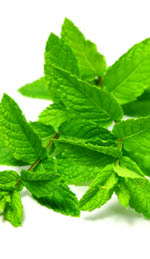 The spearmint plant holds a prominent place in human history. One Greek myth about spearmint may be the origin of the Western name of this plant. Hades, god of the underworld, attempted to seduce Minthe, a nymph. However, his wife, Persephone, did not appreciate his action, and so transformed the nymph into the fragrant spearmint plant. In modern times, spearmint is just one name for this popular flavoring for candy, ice cream, tobacco, and liquor. Some other common names are: Green Mint, Garden Mint, Sage of Bethlehem, Spire Mint, Lamb Mint, Bethlehem Sage, Pea Mint, Mackerel Mint, and Our Lady’s Mint.
The spearmint plant holds a prominent place in human history. One Greek myth about spearmint may be the origin of the Western name of this plant. Hades, god of the underworld, attempted to seduce Minthe, a nymph. However, his wife, Persephone, did not appreciate his action, and so transformed the nymph into the fragrant spearmint plant. In modern times, spearmint is just one name for this popular flavoring for candy, ice cream, tobacco, and liquor. Some other common names are: Green Mint, Garden Mint, Sage of Bethlehem, Spire Mint, Lamb Mint, Bethlehem Sage, Pea Mint, Mackerel Mint, and Our Lady’s Mint. Anyone who has tried Mexican, Indian, or Vietnamese cuisine has tasted dried cloves mixed with cinnamon and cumin but may not have recognized the flavor. Cloves have been used for centuries to accentuate the taste of foods all over the world. The locals in Indonesia use cloves to make cigarettes called kreteks, which are smoked throughout Europe, Asia, and the US, and cloves are an important incense ingredient in China and Japan as well as in Jewish ceremonies.
Anyone who has tried Mexican, Indian, or Vietnamese cuisine has tasted dried cloves mixed with cinnamon and cumin but may not have recognized the flavor. Cloves have been used for centuries to accentuate the taste of foods all over the world. The locals in Indonesia use cloves to make cigarettes called kreteks, which are smoked throughout Europe, Asia, and the US, and cloves are an important incense ingredient in China and Japan as well as in Jewish ceremonies.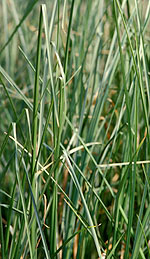 Vetiver, a tall tufted perennial grass with long narrow green leaves, has been used for centuries in Tahiti, India, Java, and Haiti to make awnings, blinds, and sunscreens. In Java the roots of the vetiver plant are woven into mats as well as thatching for huts, and this gives the rooms a fresh fragrant smell, which insects strongly dislike and avoid. Growing the tall grass protects the soil from erosion, and the plant is also a popular ingredient in perfume, soap, and toiletries in these countries.
Vetiver, a tall tufted perennial grass with long narrow green leaves, has been used for centuries in Tahiti, India, Java, and Haiti to make awnings, blinds, and sunscreens. In Java the roots of the vetiver plant are woven into mats as well as thatching for huts, and this gives the rooms a fresh fragrant smell, which insects strongly dislike and avoid. Growing the tall grass protects the soil from erosion, and the plant is also a popular ingredient in perfume, soap, and toiletries in these countries.